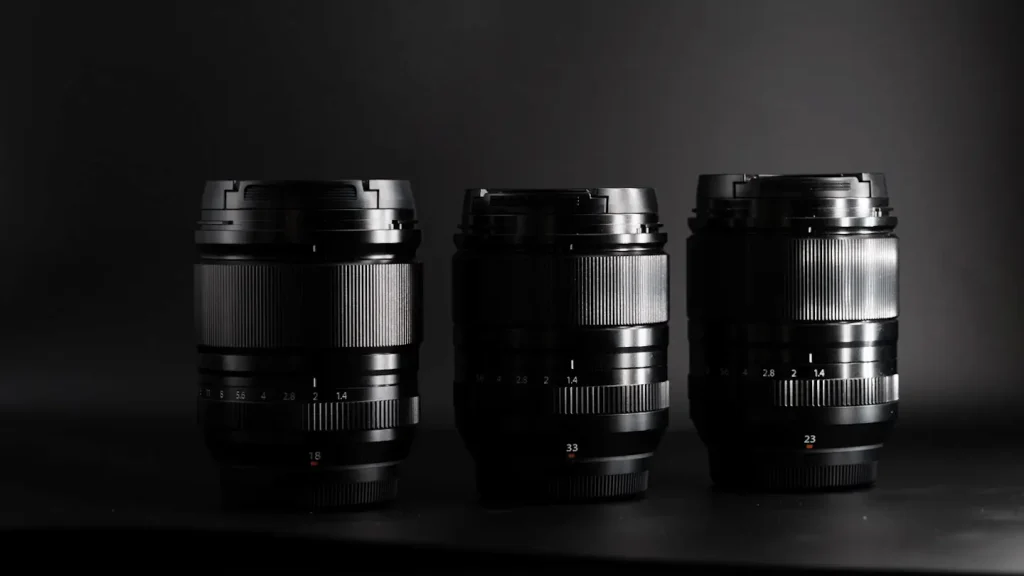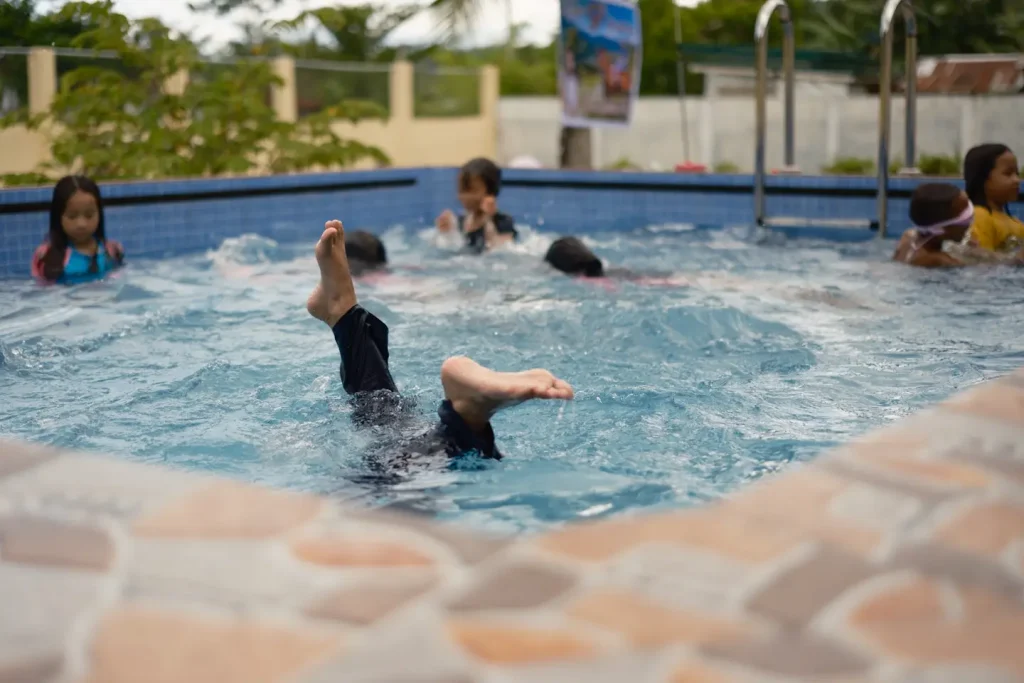Updated October 2025 — This review covers the newer XF 23mm f/1.4 R LM WR version released in 2022, not the older non-WR model. After using it extensively alongside Fuji’s 18mm and 33mm WR lenses, here’s how it holds up today.
Introduction
The original Fujifilm XF 23mm f/1.4 was one of the lenses I owned and loved back around 2015. Offering a 35mm equivalent field of view, it was wide enough to include context without straying into the distortion-prone territory of wider lenses. It felt like a premium lens with premium glass.
Back then, though, I struggled to consistently get the shots I wanted from it. I found a 50mm equivalent like the Fuji 35mm f2 easier to work with, so after a year or two I sold the 23mm. I compared the Fuji 33mm vs 35mm lenses here. It wasn’t until a year-long stint shooting exclusively with the X100T that I truly learned to see and compose with that slightly wider field of view.
When I returned to Fuji as my main system in recent years with the Fuji XT5, 35mm equivalent had become one of my “must-have” focal lengths. The XF 23mm f/1.4 WR was a natural choice — adding weather sealing and a faster linear focus motor, fixing my only two gripes with the original. Recently I have also been enjoying the 18mm f/1.4WR which I also reviewed and compared with the 23mm 1.4wr lens. I recently came back from a trip to Dumaguete where I shot the Nikon Z6III + 35mm 1.8S alongside the Fuji X-T5 + 23mm1.4WR.
The Fujifilm XF 23mm f/1.4 WR is one of Fuji’s most versatile primes — sharp across the frame even wide open, a fast and reliable linear AF motor, and weather-sealed for all-weather shooting confidence.
The 35mm-equivalent focal length makes it ideal for family photography, travel, street, and environmental portraits. If I lost my Fuji kit tomorrow, this would be one of the first lenses I’d replace.
✅ Check Current Price — Fujifilm XF 23mm f/1.4 R LM WR
View Price on Amazon →
Fujifilm XF 23mm f/1.4 R LM WR – Key Specs
- Focal length: 23mm (35mm equivalent: 35mm)
- Maximum aperture: f/1.4
- Minimum aperture: f/16
- Lens construction: 15 elements in 10 groups (including 2 aspherical and 3 ED elements)
- Angle of view: 63.4°
- Diaphragm blades: 9 (rounded)
- Minimum focus distance: 19cm
- Maximum magnification: 0.2x
- Autofocus motor: Linear motor
- Weather sealing: Yes
- Filter thread: 58mm
- Dimensions (DxL): 67 x 77.8mm
- Weight: Approx. 375g
This article contains affiliate links. If you purchase through these links, I may earn a small commission at no extra cost to you — thank you for supporting the site.
Build and Handling
The XF 23mm f/1.4 WR is slightly larger than the original, but it’s a trade-off I’m happy to make for the much faster autofocus and weather resistance. On the X-T5 it balances beautifully, and with my SmallRig L-handle grip the handling feels rock solid.
Unlike the original 23mm f/1.4, the new version no longer has a manual focus clutch to quickly switch to MF. I rarely used that anyway, and with the X-T5’s AF+MF option, the change is irrelevant for how I shoot.
The build quality is excellent — metal construction, tactile aperture ring, smooth focus ring. Losing the manual focus clutch of the original isn’t something I miss in daily use.

Autofocus Performance
The new linear motor transforms the lens. It’s quick, silent, and hunts far less than the original. It can easily keep up with my daughters, particularly Sofia, who tends to race around at breakneck speeds and rarely stands still for posed shots.
Combined with the latest firmware and eye-detect AF, capturing sharp, in-focus moments of kids in motion becomes easy — and the keeper rate is high. Get the exact settings I use, including AF, custom settings and film recipes for free.

Looking for something wider in the same premium WR lineup? Here’s my full review of the Fujifilm XF 18mm f/1.4 WR — a lens that genuinely surprised me in real-world use.
Read the 18mm f/1.4 WR Review →Image Quality
This lens is sharp in the centre wide open, but also impressively sharp across the frame — noticeably more so than the XF 23mm f/2. It’s well corrected for distortion and chromatic aberration.
The bokeh isn’t ultra-creamy due to the wider focal length, but it’s smooth, consistent, and gives enough depth-of-field control to isolate subjects effectively. Colours and contrast are classic Fuji — rich and clean without looking over-processed. It delivers even better image quality than I remember from the original, and it does so without the occasional chromatic aberration that the earlier lens could produce.
If you’re deciding between Fuji’s two most popular premium primes, here’s my full review of the XF 33mm f/1.4 WR — a tighter, more subject-focused alternative to the 23mm.
Read the XF 33mm f/1.4 WR Review →
In Use for Family Photography
For family life, the 23mm focal length is a sweet spot. It’s wide enough to fit active kids into the frame with room to spare, but tight enough to avoid distracting distortion.
Try keeping a fast-moving toddler in focus with a longer lens and you’ll quickly see the challenge — the 23mm’s wider angle makes tracking easier, and the fast autofocus motor ensures it stays locked on.
It’s a lens that lets you capture contextual portraits, more traditional head-and-shoulders portraits, landscapes, street photography, and just about anything else that comes along.

Love the 23mm but want even more background separation for portraits? Here’s my review of the 56mm f/1.2 WR — Fuji’s king of subject isolation.
Read the XF 56mm f/1.2 WR Review →Printing Results
I’ve printed plenty of shots from the XF 23mm f/1.4 WR and X-T5 combo up to 30×20 inches, and they hold up beautifully. I have no doubt they’d stand up to the full 44-inch width of my Canon Pro 4100 if I had the wall space.
Who’s It For?
If I could only choose one lens for the X-T5, it would be a close call between this and the XF 33mm f/1.4 WR. The 33mm makes it slightly easier to create subject-isolating, dramatic shots. The 23mm, on the other hand, is more flexible — capable of telling a story within the frame, handling a huge variety of subjects, and thriving in both indoor and outdoor settings.
This is the lens for:
- Parents who want to document fast-moving kids without missing focus
- Photographers who value environmental portraits over tight headshots
- Shooters who need one lens for travel, street, family, and everyday life
Pros and Cons
Pros
- Excellent sharpness across the frame, even wide open
- Fast, accurate linear autofocus motor
- Weather-sealed
- Versatile focal length for many genres
- Smooth, pleasing bokeh for a 35mm equivalent
Cons
- Larger than the original version
- Price is on the higher side compared to the XF 23mm f/2
Interested in the Fujifilm XF 23mm f/1.4 R LM WR?
You can check current pricing and availability here:
Final Thoughts, Use Cases & Value
The XF 23mm f/1.4 WR is, without doubt, one of the very best prime lenses in Fuji’s lineup. Compared to premium full-frame options, it still feels compact, the build quality is reassuringly solid, and the autofocus — thanks to its linear motor — is as good as it gets in Fuji land.
Its sharpness wide open makes it an incredibly versatile tool, capable of isolating subjects when needed but equally happy to pull back and include more of the scene. For family life, travel, and environmental portraits, that 35mm-equivalent field of view hits a sweet spot — wide enough for context, tight enough to avoid distortion.
If you were going to pick just one premium prime to add to your arsenal, this — or its sibling, the XF 33mm f/1.4 WR — would be the top contenders. Both are superb. The 33mm is better for isolating subjects and removing distractions; the 23mm is more flexible, capable of handling almost any genre you throw at it.
There’s very little I don’t like about the XF 23mm f/1.4 WR. If my kit was stolen tomorrow, it would be one of the first lenses I’d re-buy. For me, it’s one of Fuji’s all-time great primes — a lens that inspires confidence and consistently delivers results. If all-round flexibility matters most, especially for family and everyday photography, this one might just edge it.
Building your Fuji kit around the X-T5? Here’s my full guide to the best lenses for the Fuji X-T5 — including this 23mm and the lenses I’d pair it with.
Read the X-T5 Lens Guide →Frequently Asked Questions
1) Is this the new WR version or the older XF 23mm f/1.4?
This review is for the newer XF 23mm f/1.4 R LM WR (2022). It adds a linear AF motor, weather sealing, improved optics, a closer 19 cm MFD, and drops the old focus clutch. It’s a little larger/heavier, but far more reliable.
2) 23mm f/1.4 WR vs 23mm f/2 — which should I buy?
The 23mm f/1.4 WR wins for image quality, low-light work and subject isolation, with fast, quiet AF. The 23mm f/2 is smaller, lighter and cheaper. If you value portability and budget, get the f/2; if you want the best files and speed, get the WR.
3) Is the 23mm f/1.4 WR fast enough for kids, street and travel?
Yes. The linear motor is quick and virtually silent. Paired with the X-T5’s face/eye detect, keeper rates are high even with active subjects.
4) Does the WR version still have the focus clutch?
No — the WR version removes the clutch. I use AF+MF on the camera instead, which works great in practice.
5) Will it work well on older Fuji bodies?
It’s fully compatible with all X-mount cameras. Autofocus performance is best on newer bodies (X-T5/X-H2 generation), but it’s still very usable on earlier models.

